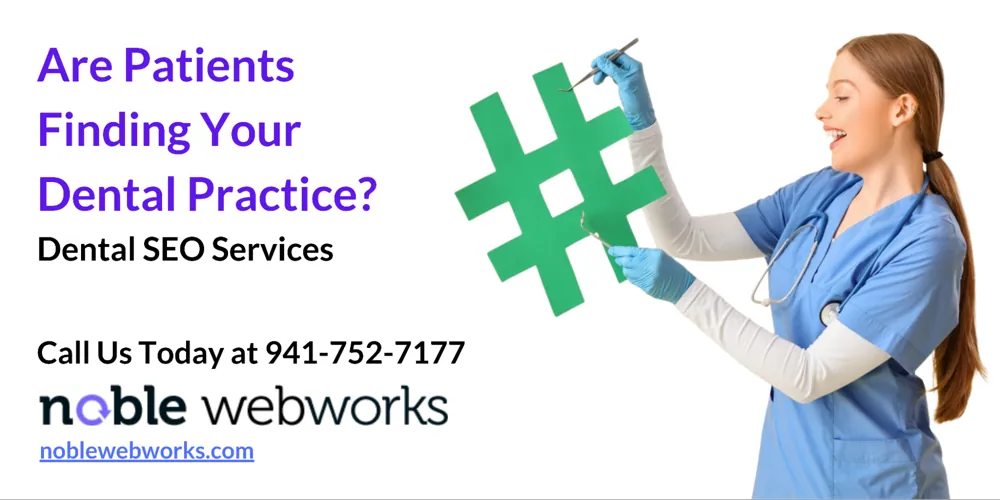Get In Touch
The Complete Guide to Dental SEO Keywords: Ranking Your Practice Online
Get A QuoteSearch Engine Optimization SEO Guide
Content Marketing Guide
Chapter 1
Introduction

A few months ago, a dentist based in Sarasota reached out to us with a dilemma. He had recently invested in a beautiful new website—professionally designed, mobile-responsive, with all the right service pages in place. The problem? Despite everything looking great on the surface, he wasn’t getting any new patient inquiries. Three months in, his analytics showed barely any traffic, and his phones remained quiet. We took a closer look and quickly uncovered the issue: the website had no dental SEO keyword strategy. It wasn’t being found in search at all, simply because it wasn’t optimized for the terms potential patients were actually using.
That story isn’t uncommon, especially in healthcare. A dental practice can have all the visual bells and whistles, but without a well-planned SEO keyword foundation, even the most impressive site won’t drive results. According to BrightEdge’s 2023 report, over 68% of online experiences begin with a search engine.
In local service industries like dentistry, that number translates into real-world appointments, new patients, and revenue. If your practice isn’t showing up for searches like “dentist near me” or “emergency dental care in Bradenton,” you’re simply not in the running—no matter how beautiful your site may be.
Chapter 2
What Are Dental SEO Keywords?
At their core, SEO keywords are the phrases and queries your audience types into search engines. They're the connective tissue between what users want and what your website offers. But not all keywords are created equal.
There are short-tail keywords (like “plumbeDental SEO keywords are the search phrases your future patients use when they need a dentist. These keywords help search engines understand what your website is about and decide whether it should show up in results for specific queries. A potential patient might type “teeth whitening Sarasota,” “Invisalign for adults near me,” or “pediatric dental emergency Bradenton,” each representing a different level of urgency and interest. Your job, and ours as SEO specialists, is to ensure your content speaks directly to these search queries so Google can recognize your relevance.
Understanding what people are searching for is only half the battle. The other half lies in matching those keywords to the right pages and understanding the intent behind each search. Someone searching for “what causes tooth sensitivity” is likely looking for information, not scheduling an appointment—yet. But that same user may return to Google days later and search “tooth pain relief dentist near me,” signaling a clear intent to act. The goal of dental SEO keyword strategy is to create a digital path that guides users from those early-stage queries all the way to conversion.
Chapter 3
How Intent Shapes Dental Keyword Strategy
Search intent refers to what someone is actually looking to accomplish when they type a query into a search engine. For dental SEO, this can range from casual research to booking an appointment in an emergency. This is why intent matters more than just keyword popularity or search volume. A blog post answering “how long do dental implants last” serves a different purpose than a service page titled “Dental Implants in Lakewood Ranch.” One is educational, the other is transactional—and both are important, but they need to be built and optimized with their respective goals in mind.
When your content aligns with the right stage of the patient journey, you become more visible to the right people at the right time. That’s what makes intent mapping one of the most critical elements of keyword planning. Your blog content builds trust early on, while your service pages do the heavy lifting when it comes to converting that trust into scheduled appointments.

Chapter 4
Why Location-Based Keywords Matter in Dental SEO
Dental care is a locally driven business. People don’t usually travel across state lines for cleanings, root canals, or fillings—they want someone close to home, or at least within a short drive. This is why location-based keywords are so powerful. When someone types “best family dentist in Sarasota” or “emergency dental care Lakewood Ranch,” they are actively looking for a provider near them. Search engines use these geographic signals to prioritize local results, often displaying practices in the user’s immediate vicinity.
Optimizing for these kinds of location-based keywords goes beyond just adding a city name to your homepage. Every service page, blog post, and meta description should incorporate geography naturally, providing Google with clear indicators of where your practice operates and which areas you serve. Combined with a fully optimized Google Business Profile and accurate local listings, these keywords help elevate your site into the map pack—the top three local results displayed prominently on most dental-related searches.
Chapter 5
Choosing the Right Keywords for Your Dental Practice
Choosing effective dental SEO keywords starts with knowing your patients. It’s not enough to rely on generic terms like “dentist” or “teeth cleaning.” You need to consider how people in your area talk about dental services, what concerns they express, and how they phrase their questions. A term like “toothache relief dentist near me” may not have as much monthly volume as “dentist Bradenton,” but it indicates strong buyer intent. Those are the kinds of leads that convert into actual appointments.
Keyword research tools can offer valuable insight, but real strategy lies in matching keywords with relevance, intent, and opportunity. At Noble Webworks, we don’t just look at numbers—we look at context. That includes evaluating competition, measuring keyword difficulty, and identifying content gaps. By aligning the right keywords to the right pages—whether it’s your homepage, a specific service, or a location-based offering—we help dental practices gain visibility where it counts.
Chapter 6
How to Map Keywords Across Your Website
Effective keyword strategy depends on proper keyword mapping. Each page on your website should have a primary keyword target, along with secondary or supporting terms that complement it. For your homepage, the focus should typically be on broad keywords that summarize your offerings and include your primary service area. This page is your digital front door, and it should establish authority for core terms like “family dentist in Sarasota” or “general dentistry Bradenton.”
Service pages allow you to go deeper. A dedicated page for Invisalign, for example, can target terms like “Invisalign for adults Sarasota” or “clear aligners near Lakewood Ranch.” Similarly, an emergency care page might focus on keywords such as “emergency dental services Bradenton” or “urgent care dentist open now.” By giving each page a specific focus, you allow Google to more easily understand and index your content, reducing the risk of keyword cannibalization and maximizing your chances of ranking well for each topic.
Your blog is where long-tail keywords and informational content come into play. These aren’t always meant to convert immediately, but they can attract early-stage visitors and nurture them toward a decision. Articles like “What to expect during a root canal” or “Best age for braces in kids” can help your site appear in a broader range of search results, extending your reach and reinforcing your authority in the eyes of both patients and search engines.
Chapter 7
Why Local SEO Elevates Dental Keyword Strategy
Local SEO is the natural complement to a well-researched dental SEO keyword strategy. It involves more than just on-site content—it includes your business listings, online reviews, map visibility, and local backlinks. But at the center of it all is consistency. When your keywords, location data, and business information all align across your website and third-party platforms, Google sees your practice as more credible and relevant for local searches.
We’ve worked with dental clients across the Gulf Coast who saw significant gains by simply optimizing their service pages with localized keywords and restructuring content around specific procedures. In one case, a Bradenton-based pediatric dental practice moved from page three to page one in under 60 days after implementing a new keyword map and adding location-focused schema markup. These small changes created big results—and they’re entirely achievable with the right strategy in place.
Chapter 8
How Long Does It Take to See Dental SEO Keywords Results?
SEO is not a quick fix—it’s a strategic investment. For newer websites or competitive markets, it can take three to six months to gain meaningful traction in organic search. However, long-tail and location-specific keywords often show movement faster, especially when paired with optimized content and a technically sound website. That said, the true power of SEO lies in its compounding nature. Every blog post, optimized page, and internal link builds on the last, slowly but steadily increasing your authority in search engines and expanding your visibility.
Chapter 9
Frequently Asked Questions About Dental SEO Keywords
What are the best SEO keywords for dentists?
The best keywords depend on your services and location, but high-performing examples often include terms like “dentist near me,” “emergency dental care Sarasota,” and “Invisalign Bradenton.” The key is to choose terms that align with both user intent and your practice offerings.
Should each service page use a different keyword?
Yes, every service page should be optimized for a unique primary keyword. This helps search engines understand the purpose of each page and prevents internal competition, also known as keyword cannibalization.
How do I know if my current keywords are working?
You can monitor keyword performance using tools like Google Search Console, but a professional SEO audit can provide a deeper look into keyword rankings, traffic trends, and conversion opportunities.
Can local SEO keywords really help small dental practices compete?
Absolutely. Local SEO levels the playing field by allowing smaller practices to rank highly in geographic-specific searches. Targeting local keywords helps you reach the people most likely to book an appointment.
What happens if I use the same keyword on multiple pages?
Using the same keyword across multiple pages can confuse search engines and hurt your rankings. It’s important to ensure each page has a unique keyword focus and serves a distinct purpose in your content strategy.
Chapter 10
Let’s Build Your Dental SEO Strategy the Right Way
Your future patients are already online, typing in questions, researching providers, and comparing options. The question is—will your practice be there when they search? With a strategic, intent-driven keyword plan, you can turn your website into your most powerful patient acquisition tool. At Noble Webworks, we specialize in crafting SEO strategies that are tailored to your services, your audience, and your goals. From in-depth keyword research to complete on-page optimization, we help dentists get found, get chosen, and get results.
If your website is falling short of expectations—or you’re not sure where to begin—our team is here to help. Let’s take the guesswork out of your dental SEO and replace it with proven strategy.
Contact Noble Webworks today for a Dental SEO Keyword consultation, and let’s put your practice on the map—literally.
Let’s talk - We're here to help!
Are you ready to get started or do have questions about your online marketing options? We are happy to talk with you either way.
Contact Us








